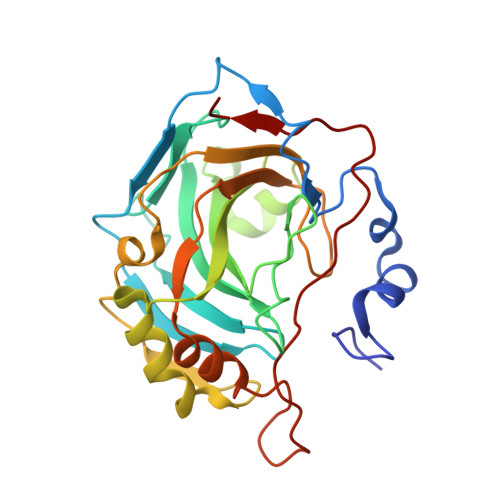Sulfonamides incorporating piperazine bioisosteres as potent human carbonic anhydrase I, II, IV and IX inhibitors.
Chiaramonte, N., Bua, S., Angeli, A., Ferraroni, M., Picchioni, I., Bartolucci, G., Braconi, L., Dei, S., Teodori, E., Supuran, C.T., Romanelli, M.N.(2019) Bioorg Chem 91: 103130-103130
- PubMed: 31374520
- DOI: https://doi.org/10.1016/j.bioorg.2019.103130
- Primary Citation of Related Structures:
6RG3, 6RG4, 6RHJ, 6RHK - PubMed Abstract:
Starting from the molecular simplification of (R) 4-(3,4-dibenzylpiperazine-1-carbonyl)benzenesulfonamide 9a, a compound endowed with selectivity for human Carbonic Anhydrase (hCA) IV, a series of piperazines and 4-aminopiperidines carrying a 4-sulfamoylbenzamide moiety as Zn-binding group have been designed and tested on human isoforms hCA I, II, IV and IX, using a stopped flow CO 2 hydrase assay. The aim of the work was to derive structure-activity relationships useful for designing isoform selective compounds. These structural modifications changed the selectivity profile of the analogues from hCA IV to hCA I and II, and improved potency. Several of the new compounds showed subnanomolar activity on hCA II. X-ray crystallography of ligand-hCAII complexes was used to compare the binding modes of the new piperazines and the previously synthesized 2-benzyl-piperazine analogues, explaining the inhibition profiles.
- University of Florence, Department of Neuroscience, Psychology, Drug Research and Child's Health, Section of Pharmaceutical and Nutraceutical Sciences, Via Ugo Schiff 6, 50019 Sesto Fiorentino, Italy.
Organizational Affiliation:



















